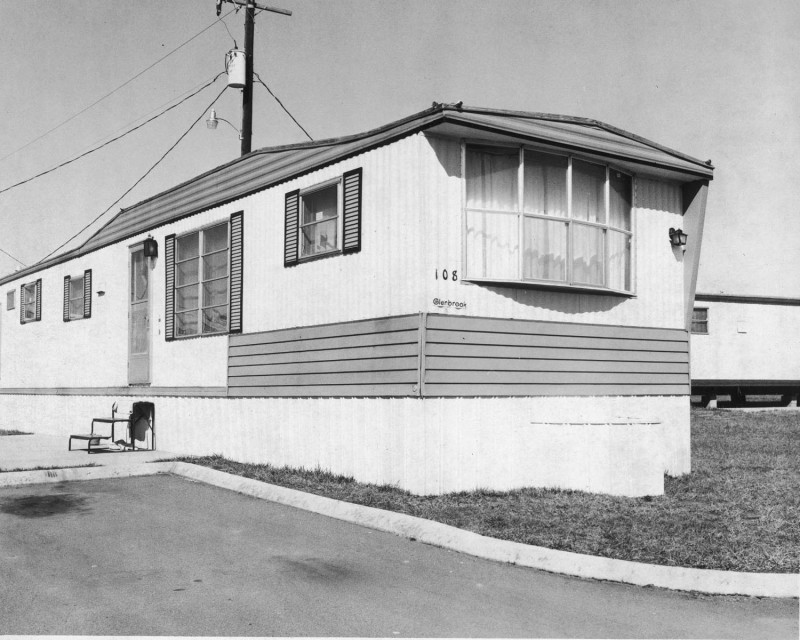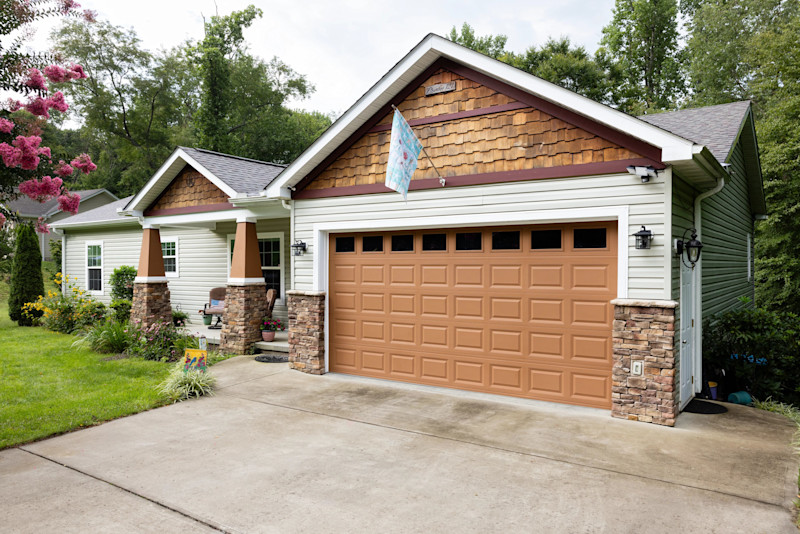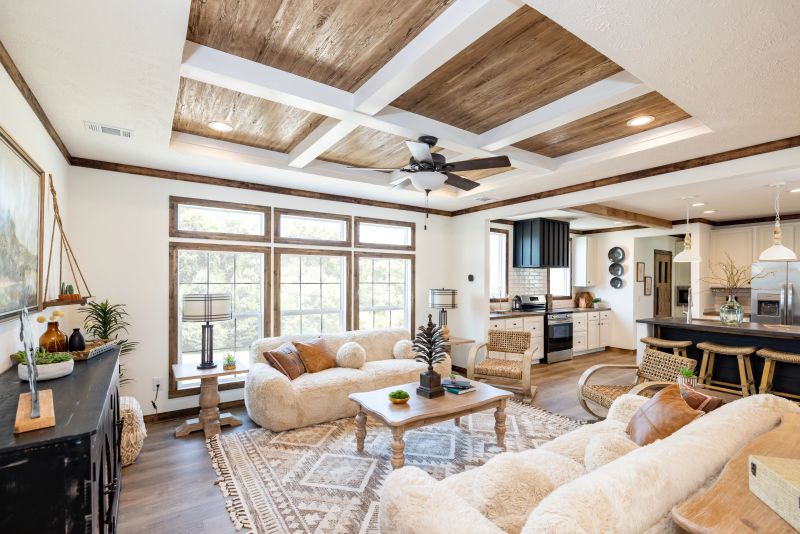What's the Difference? Mobile vs. Manufactured vs. Modular Homes

Want to learn more about the types of off-site built housing? The Clayton team has the answer to the commonly asked question, “What are the differences between mobile, manufactured and modular homes?”
If you’re reading about off-site built homes, you’ll probably see several different terms used, and it can definitely be confusing to understand the differences between them. But that’s why I’m here to help!
Basically, off-site built homes are built inside of a facility and then delivered to the home site, where final setup details take place before move-in day. This is compared to a site-built home, which is it built at the home site, like its name suggests. You may also hear off-site built homes called “prefabricated” or “prefab” homes because of the construction process used to build them. Make sense so far?
The types of off-site built homes include manufactured, modular and mobile homes. Manufactured and modular homes can look very similar to each other, and both can also look like traditional site-built homes. The main difference between them is the building codes they’re built to, which we’ll talk more about below. You’re probably also wondering where those older mobile homes you may have some preconceived ideas about fit into these definitions. So, let’s break down the details and what it all means.

Key Takeaways
- Clayton offers a variety of off-site built homes, including manufactured and modular options, that are constructed in climate-controlled facilities to ensure quality and reduce delays.
- Manufactured homes are built to federal HUD standards for safety, construction and energy efficiency, and they feature modern designs and several options for foundation types.
- Modular homes are also constructed inside facilities but follow state and local codes like traditional site-built homes.
- CrossMod® homes combine the benefits of manufactured and site-built homes with features like elevated roof pitches and permanent foundations, offering a home that can appraise similarly to site-built homes and increase in value over time.


What is a Mobile Home?
Let’s start with some brief but important history. Sometimes, people will still use “mobile home” or "trailer" to refer to the manufactured homes you see today, but you may be surprised to see just how much off-site built homes have evolved over the decades.
Mobile homes first became popular due to the higher demand for affordable housing after World War II, but there wasn’t a lot of oversight when it came to the building standards and materials that were used. These early mobile homes looked a lot like campers or trailers, with a trailer coupler and wheels. They could be set up on concrete blocks, wooden blocks, metal stands or a concrete foundation.
However, those older mobile homes were distinguished from modern manufactured homes in 1974, with the National Mobile Home Construction and Safety Act. In 1976, this was followed by the HUD Manufactured Home Construction and Safety Standards — usually called the HUD code — which set federal standards for manufactured home safety and construction, including areas like:
- Home design
- Plumbing and electrical systems
- Heating and cooling systems
- Fire safety requirements
- Thermal protection requirements
- Energy efficiency
- Installation requirements
- And more
These codes then led to many of the innovations you’ll find in modern manufactured homes, which we’ll take a look at next.

What is a Manufactured Home?
Today’s manufactured homes are extremely different from mobile homes built prior to 1976, both in terms of their construction and their design. Manufactured homes are built using quality materials and streamlined construction processes, inside climate-controlled facilities and according to the HUD Code.
They come in a wide range of styles, from modern to farmhouse to traditional, and can range in size from under 1,000 sq. ft. to over 2,000. You’ll also find many popular features, like built-in storage solutions, spacious porches, attached garages, luxurious primary suites and designer kitchens, all similar to modular or site-built homes.
And aside from the building codes they’re constructed to, something that can set manufactured homes apart from other homes is the type of foundation they’re on. Manufactured homes typically have what’s called a pier and beam foundation, which means they can usually be relocated by a specialized contractor. Depending on factors like where the home will be located, a manufactured home can also be placed on a permanent foundation, crawl space or basement.
About CrossMod® Homes
Clayton also offers several CrossMod® home models, which are also built according to HUD code. CrossMod® homes combine some of the advantages of both off-site and site-built homes for an innovative option. They’re constructed inside of a building facility like a manufactured or modular home and include features that make them look more like a site-built home, such as an elevated roof pitch, garage, covered porch and permanent foundation.
Because of the features CrossMod® homes have, they can appraise similarly to a site-built home and increase in value over time, depending on the housing market.
And now that you’re feeling confident about the difference between mobile and manufactured homes, it’s time to talk about modular homes.

What is a Modular Home?
Like manufactured homes, modular homes are constructed inside of a facility and then transported to the home site, where the finishing touches take place.
The main difference between manufactured and modular homes is that while manufactured homes are built to meet HUD code, modular homes need to follow all of the applicable state and local building codes. This is more similar to the way site-built homes are constructed.
The exact codes and standards a modular home is built to can vary based on the state the home will be located in, as well as the county, city or township. For example, some states, like North and South Carolina, have standards about the appearance of a modular home that regulate the minimum roof pitch, roof overhang length and foundation wall requirements. Some areas may also require modular homes to be permanently installed at the home site without a steel frame, while others allow on-frame foundations and lower roof pitches.
Modular homes also offer the same variety of beautiful styles and features you’ll see in modern manufactured homes. However, the building codes mean it can sometimes be easier to adjust a modular home’s floor plan to fit a buyer’s customization needs. In addition, a modular home may be a more expensive option than a manufactured home, although both options can fit with a wide range of budgets.
Choosing between a manufactured or modular home often depends on factors like your location and budget, and a home consultant at your local Clayton home center can definitely help you determine which might be the right fit for you.
And now, let’s wrap it up by talking about what all of these options can mean for today’s home buyers.

Why You Should Consider an Off-Site Built Home
A manufactured or modular home from Clayton can be a great choice for you and your family for many reasons. First, we construct our homes across the country inside of our home building facilities, using efficient methods that allow us to reduce both material waste and delays because of factors like bad weather. This is part of what helps us offer home buyers more affordable options.
Clayton also uses materials from leading home building brands, so our homes include quality products right down to details like the windows, door hardware and appliances. We also build with energy efficiency in mind and include smart home features like an ecobee Smart Thermostat® in all our new homes to help buyers save energy and reduce the overall cost of homeownership.
As I mentioned earlier, it’s also about being able to choose from a variety of styles and features. Many of Clayton’s manufactured and modular home models offer several options when it comes to flooring, cabinetry, paint colors and exterior siding, as well as different kitchen or bathroom layouts. So, from five-bedroom homes full of farmhouse details to single-section models that incorporate tiny home design to everything in between, we’re all about helping you find what fits your life and needs.
Since 1956, Clayton has made the dream of homeownership possible for more people by offering affordable, beautiful homes that are built to last. Want to see more of what we have to offer? Head to our Find a Home page to see manufactured and modular home models that are available in your area.
CrossMod is a registered trademark of the Manufactured Housing Institute. All trademarks are the property of their respective owners.
Come see beautiful, affordable home models available near you.
Are you ready to find your dream home?
Start shopping now or find a home center in your area to learn more about Clayton Built® home options.By entering your email address, you agree to receive marketing emails from Clayton. Unsubscribe anytime.
© 1998-2025 Clayton.

